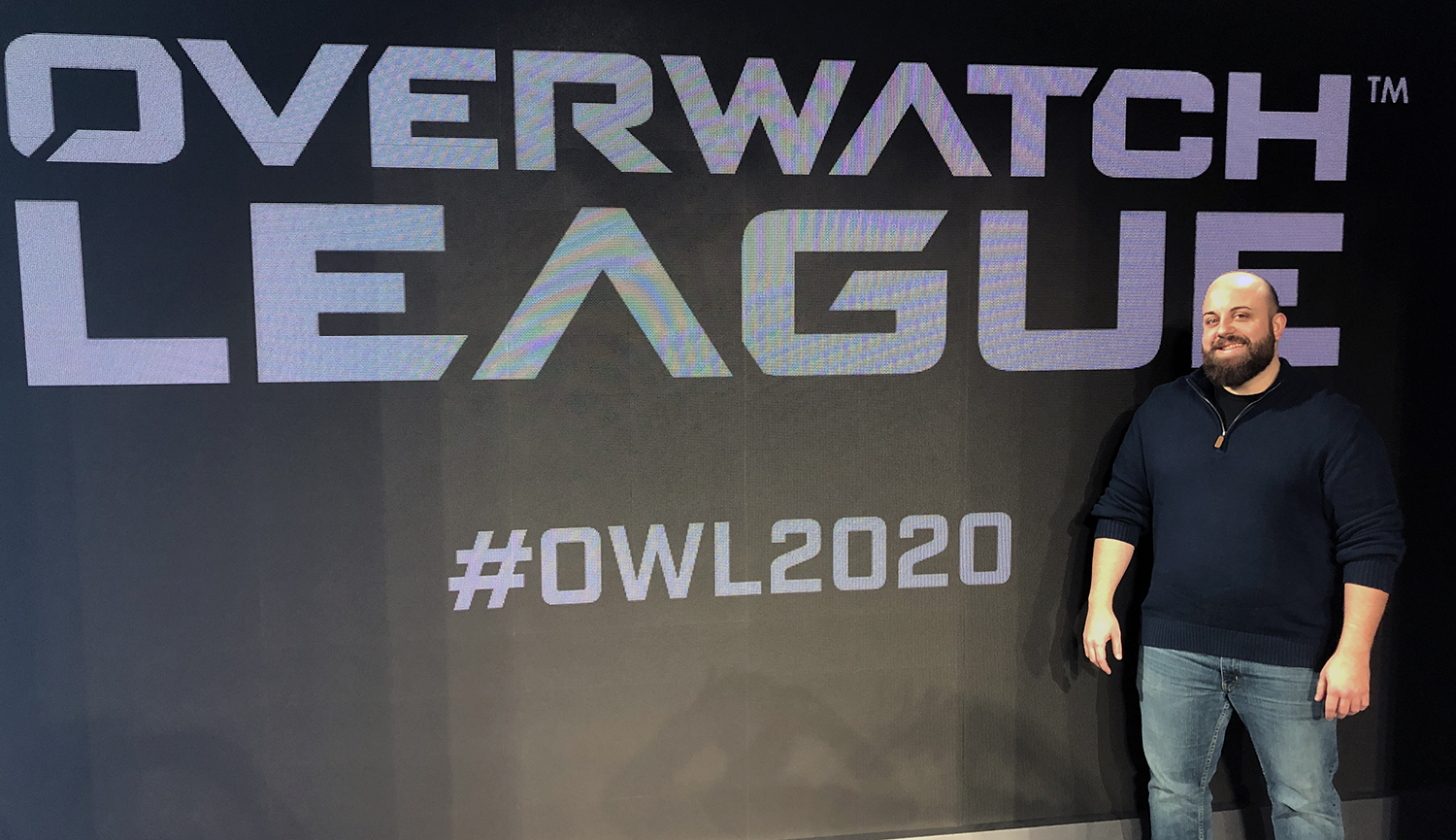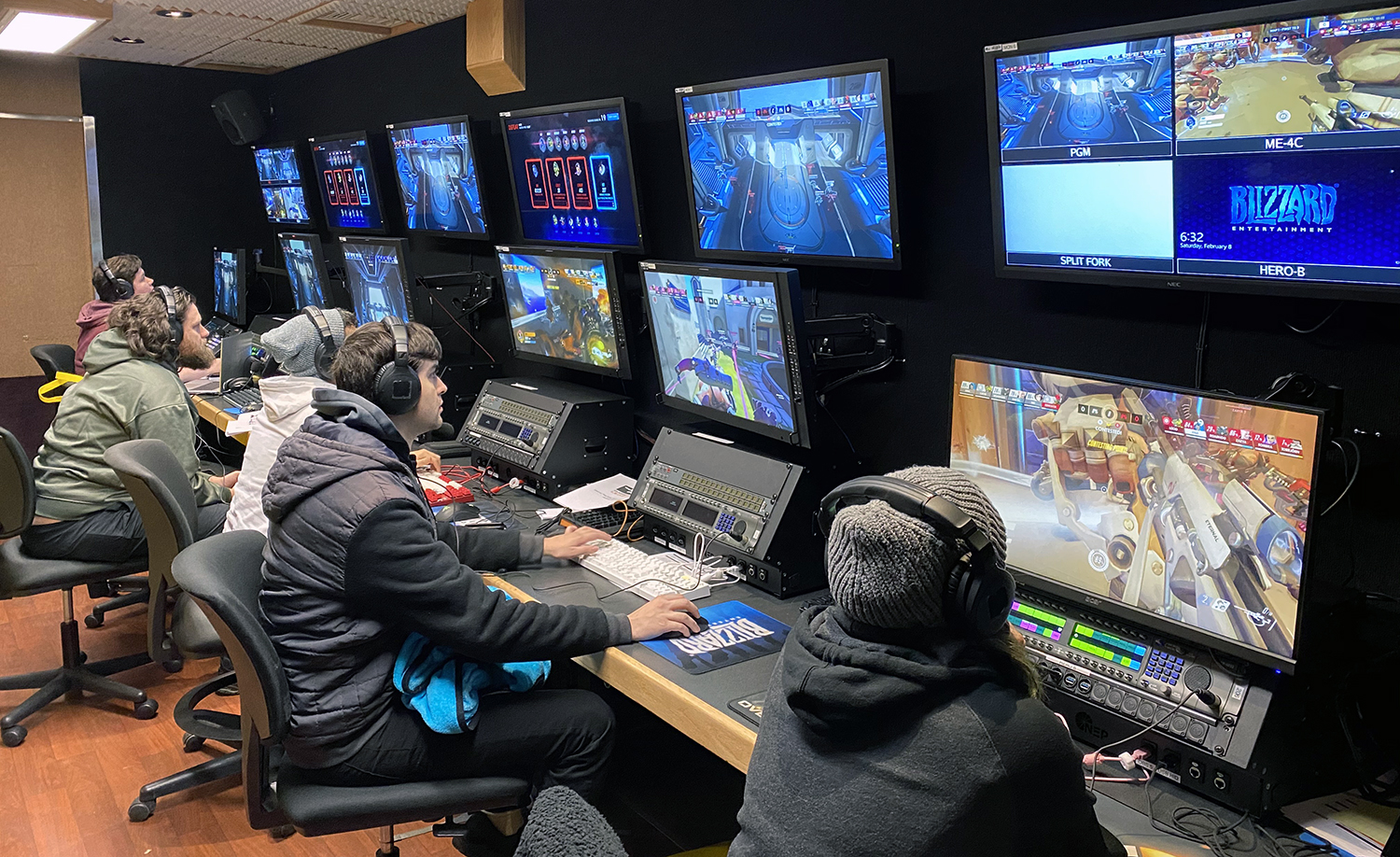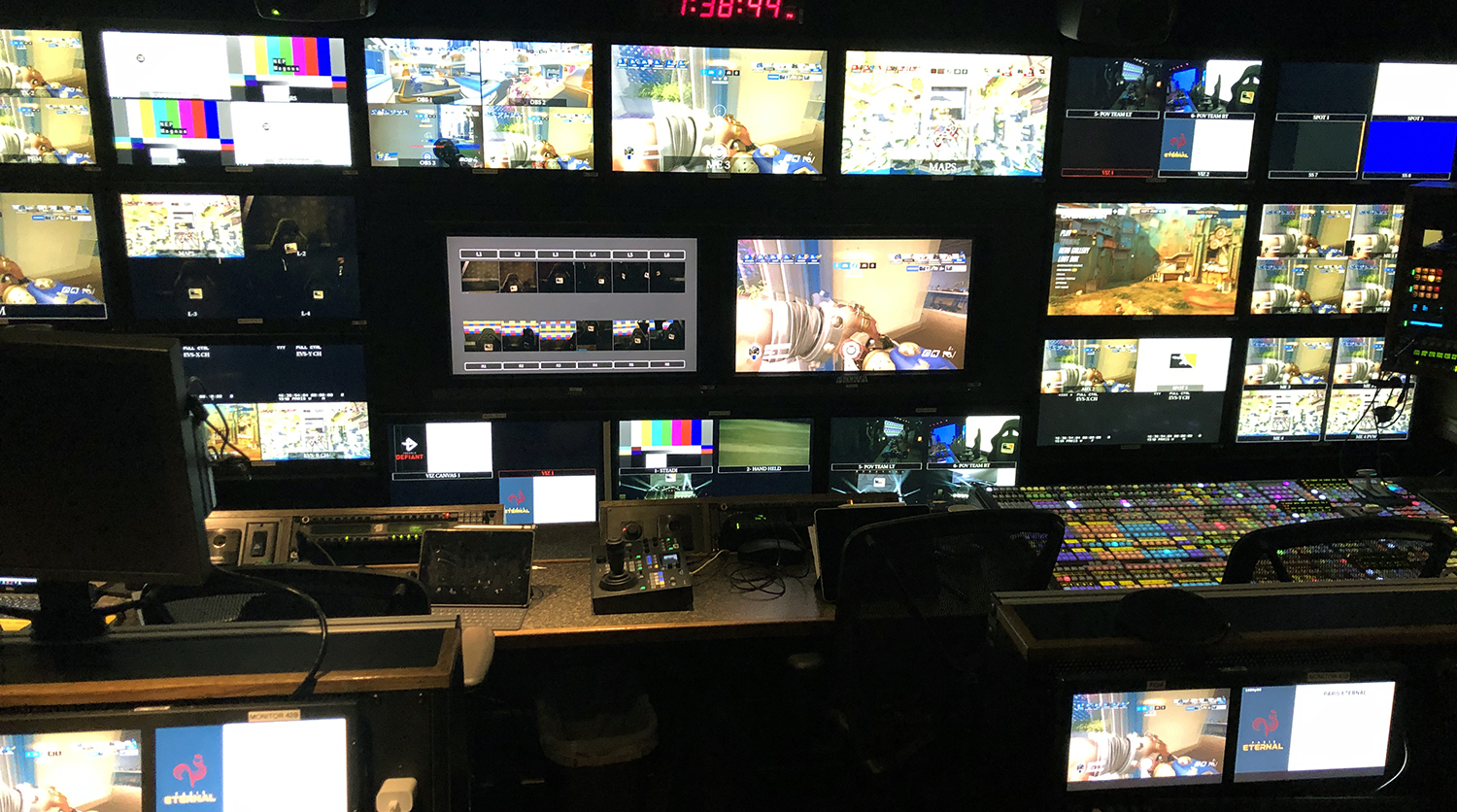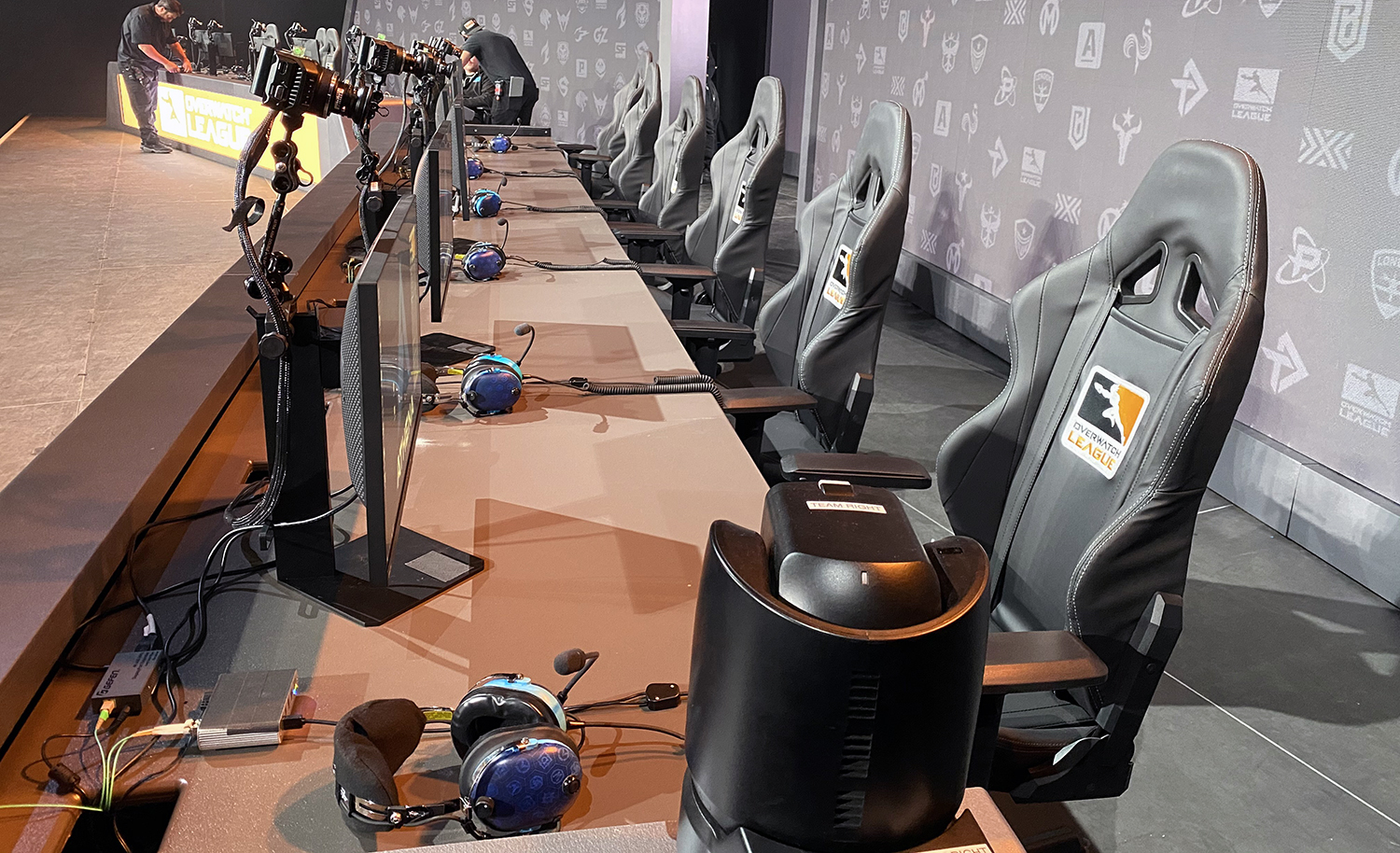Overwatch League Launches Home-and-Away Era With Opening Homestands in NYC, Arlington
Activision Blizzard Esports built an entire broadcast ecosystem for the new model
Story Highlights
Last weekend, more than three years of development by Blizzard Entertainment culminated in the Overwatch League’s (OWL’s) first pair of homestands, in New York City and Arlington, TX. Now in its third season, the esports league had planned from the beginning to transition from a central venue (previously, Blizzard Arena in Burbank, CA) to a home-and-away model that would allow its teams to host a series of homestands. Dubbed Project 2020, that vision has become reality.
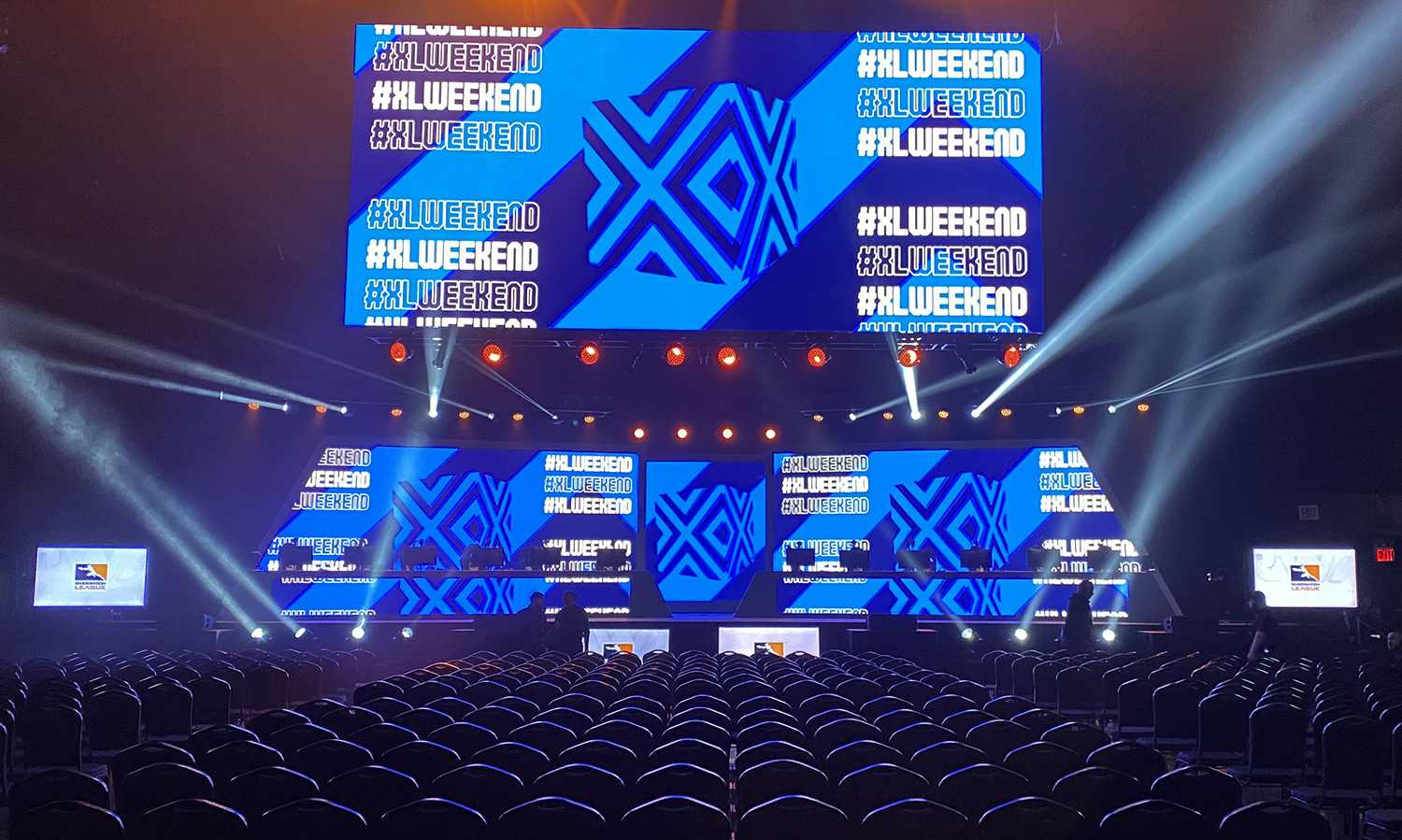
Hammerstein Ballroom in NYC was one of two venues (along with Arlington) for Overwatch League Opening Weekend.
“It’s really an amazing feeling because we’ve had the name — Project 2020 — for this [home-and-away effort] for more than three years, and now it’s actually the year 2020,” says Pete Emminger, VP, global broadcast, Activision Blizzard Esports. “Our entire broadcast team didn’t even exist when I came on board as a full-time employee three years ago. So I’m really proud of the team and happy to be here at this point when we can see all this hard work pay off. And we’re excited to see how it grows from here.”
To make the home/away model a reality, Blizzard built an entire broadcast ecosystem that has a heavily cloud-based infrastructure and features scalable solutions onsite. Among the key ingredients are cloud-based master-control and transmission systems, custom-built field kits for IT and production needs, a new TeamSpeak comms system, and a virtual studio at its Los Angeles production facility.
All About the Cloud: Master Control, Transmission, and MAM Head to the Sky
Opening Weekend kicked off with four matches each (two on Saturday and two on Sunday) from Hammerstein Ballroom in Manhattan and Esports Arena Arlington. The Activision Blizzard Esports broadcast team was also in London producing Week 2 of Call of Duty League, which launched last month with a similar homestand format. In addition, Overwatch League’s studio analysis show, Watchpoint, was produced out of Activision Blizzard Esports’ new facility at LA Center Studios (LACS) in Downtown Los Angeles.
Since this will be just one of many multi-site weekends this year, the Blizzard broadcast team has transitioned to a fully cloud-based master-control system. The transmission signals are sent from all onsite locations to Blizzard’s transmission-operations center (TOC) in Irvine, CA, for QC and delivery as well as to its broadcast-operations center (BOC) for master-control routing in the cloud. All signal routing is handled via AWS and distributed to YouTube (which signed an exclusive OWL-rights deal prior to the season) and regional partners producing additional content in different languages.
“It’s very different from the traditional-style master-control workflow, but it works out really well,” says Ryan Cole, senior tech manager, Activision Blizzard Esports. “We’ve been doing [cloud-based transmission] for a while, but we’re taking it to the next level this year because we think it’s the right fit to do the job. Our Technology Group has done a phenomenal job from the transmission perspective, and then our job is to put production technology together and interface to make sure it all works correctly.”
In terms of transmission, Blizzard sent out eight feeds from onsite: clean and dirty program feeds, an overhead maps view with team comms layered in (for coaching-tape needs), the observer replay feed (for postproduction), robotic cameras inside the venue, and another EVS replay feed to provide the Watchpoint studio production in L.A. with highlights content.
“We have our transmission team here [in New York], but they’re only going to be here for the first few events,” says Cole. “Since our entire transmission workflow is in the cloud, they’re going to be managing all our routing and master-control functions from our BOC and TOC.”
Using its AWS transmission backbone, Blizzard is also sending all its content directly from the venue to its media-asset management (MAM). The assets are sent to an Amazon S3 bucket in the cloud, are imported into its Reach Engine by Levels Beyond MAM platform, and then can be sent to its local Avid Isilon storage at LACS if necessary.
Blizzard has also created a customized cloud-based system (called Split-Fork) to insert graphics via master-control workflows for sponsorship assets and branding in different regions.
“We’re looking at a lot of unique, interesting cloud-[based workflows] that not many people have done before,” says Cole. “We’re trying to think more about scale and how we can leverage the cloud to be more effective. But we’re doing it with the right mentality in mind where you start small and scale it up as you go.”
Live From New York, It’s Overwatch League Opening Weekend
In New York last weekend, NEP’s Magnus served the main production, and Supershooter 23 B unit housed Blizzard’s team of observers (essentially, in-game camera operators for esports productions). The main production features standard positions (director, producer, TD, etc.), with the B unit housing a six-person observer crew: an in-game director, two Freecam observers, two first-person observers, and one replay observer.
NEP Magnus and Supershooter 23B will serve as the OWL production and observer teams’ primary units throughout the OWL season. However, for weekends with concurrent events in multiple cities (such as Opening Weekend), Blizzard has also built a series of flypacks for the observer team instead of using a B unit. This was done to maintain consistency from show to show.
“This year, we have standardized the [observer] practices for efficiency and ability to scale at large,” says Cole. “We think the observer gameplay content is one of the keys to our success, so we want to keep that consistent.”
Inside Hammerstein Ballroom, the show featured 20 total cameras: four Grass Valley LDX86N broadcast cameras, four Sony BRC-H800 robos, and 12 Blackmagic Micro Cinema POV cams with 8mm SLR lenses to cover each player. All OWL events also feature 20 channels of EVS replay onsite (plus six more channels at the LA Center Studios) and four channels of Vizrt Trio graphics (plus the cloud-based Split-Fork system).

The caster desk is onsite and equipped with monitors displaying the program feed, overhead maps view, and stats feed.
The caster desk is onsite and equipped with monitors displaying the program feed, overhead maps view, and stats feed. However, the Watchpoint studio analysis position for pre/postgame and halftime shows is back in L.A. rather than onsite.
The OWL teams’ production responsibilities will vary from venue to venue, but, generally, Blizzard will handle the gameplay and broadcast operations while the in-venue show (and entertainment segments between matches) is produced in partnership with the team.
“For the most part, we are creating the broadcast and in-game experience, but, when there is a break in the action, we want to let teams create their own environment for the fans at the venue,” says Cole. “They have their own content, their own stories to tell, and their own unique fans. We want them to be able to create a special experience around those fans and really cater to them.”
Custom-Built Field Kits: Creating Modular Solutions for the OWL Roadshow
In addition, the Blizzard has created six mobile field kits with scalable infrastructure built to support OWL and Call of Duty shows across the globe. These scalable, fully redundant flypacks include OWL’s core equipment racks (game servers, ATEME Titan transmission encoders, etc.), the IT kit for players and team dugouts, and (when necessary, instead of a B unit) the customized observer kit.
“These kits were built custom for this tour-based environment, and they will be at every show for us,” says Cole. “We had to be very keen to how quickly we can set shows up and how quickly we can tear them down, because this not a traditional [broadcast] workflow where we’re just setting up 10 or 12 cameras. We have PCs, heavy IT integration, and players [competing] on stage. There’s a lot of variables, so we wanted to make sure that we maintain the functionality [we had at Blizzard Arena] but also create some really good efficiencies moving forward.”
OWL Ups Its Comms Game With TeamSpeak
In advance of this OWL season, Blizzard partnered with TeamSpeak to handle player/coach communication on the stage.
Previously, OWL deployed two audio consoles (one per team) and mixed the audio for both sides using an operator in order to ensure integrity of the competition. The new system, which features two independent TeamSpeak comms servers managed by a game admin, automates many of the previously manual comms processes while ensuring the integrity of comms for both teams. It also offers more flexibility and opens up new opportunities to integrate player comms into the broadcast.
“We’re actually capturing the audio through TeamSpeak at the truck so that we can use it in the production and also pipe it back into our records for media-asset management later on,” says Cole. “There are a lot of cool, interesting workflows running across [competition and broadcast] comms now, and, overall, it’s working well.”
Back in L.A.: Watchpoint Studio Show Features New Virtual Set
With the move away from Blizzard Arena following the previous OWL season, the esports broadcast team has erected a new production facility at LACS. Watchpoint is hosting all pre/postgame and halftime shows from a brand-new virtual set there. Blizzard worked with Reality Check Systems (RCS) and The Future Group (and its Pixotope virtual-production software) on the studio system.
The LACS studio is equipped with six channels of EVS replay and is taking in feeds from the onsite location to produce Watchpoint highlight content for the analyst desk.
At LACS, Blizzard also has a producer dedicated to the OWL stats system calling up the stats functions and passing data feeds through to the casters and the truck onsite. Previously, the stats system (which was created in-house by Blizzard) was only locally onsite.
With the OWL season entering Week 2 and CDL its second month, the Blizzard broadcast team is far from done.
“We’re starting something new that hasn’t been done before, so we’re going to continue to refine things every single week,” says Cole. “One of the things we wanted to do from the start is make sure we have the most efficient workflow in place but also [ensure] that we’re still producing the same level of quality that we’ve always done — just at a different scale. [We’re] doing this many shows on the road, but it has to be repeatable and scalable. That’s what we’re focused on.
The Overwatch League season continues this weekend with the Philadelphia Fusion’s homestand at The Met Philadelphia.
